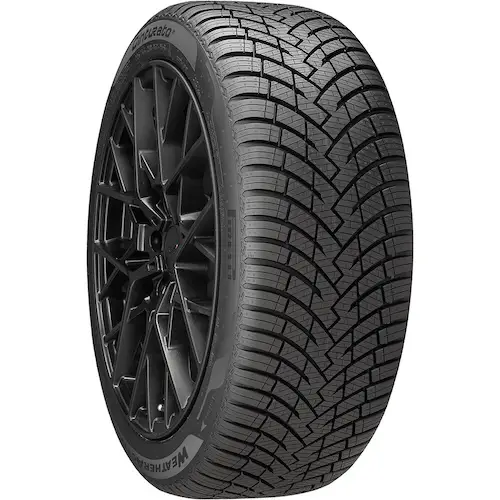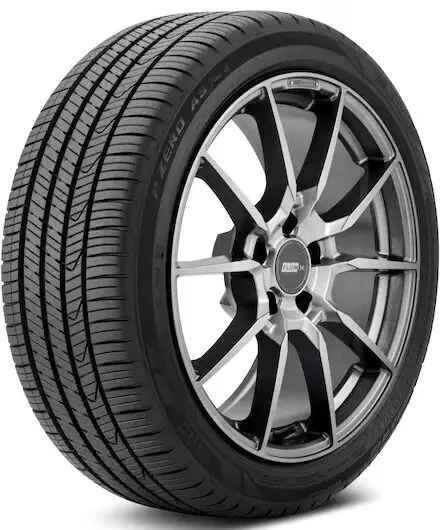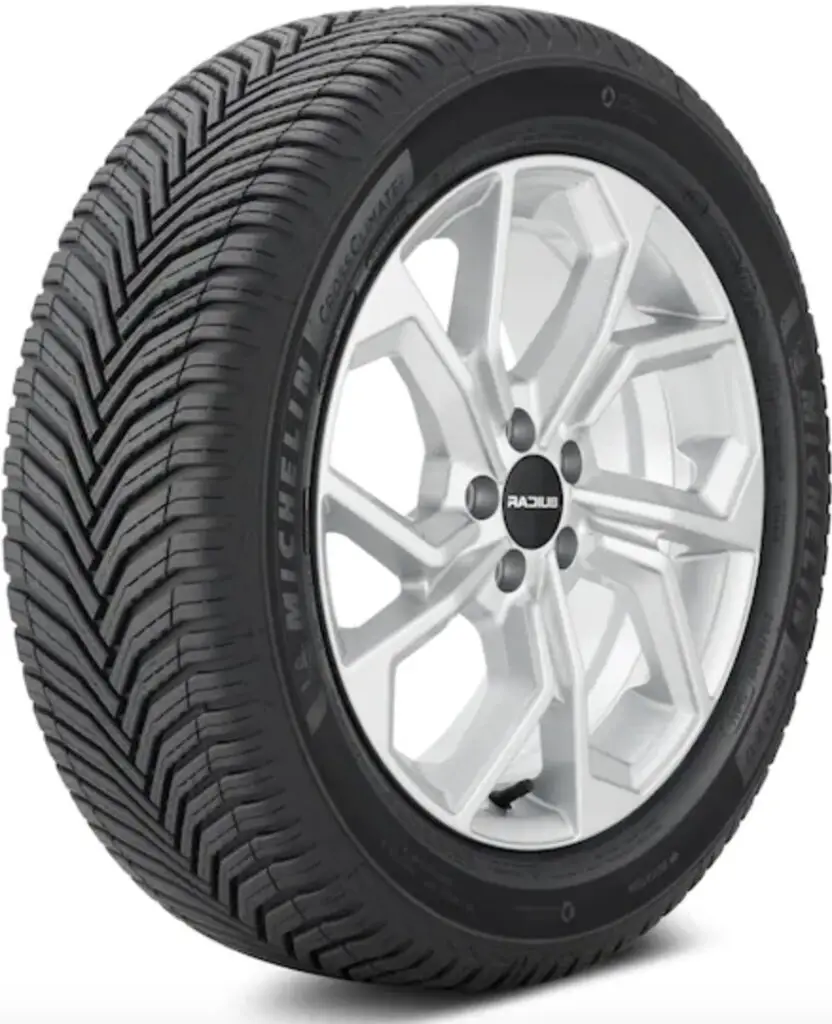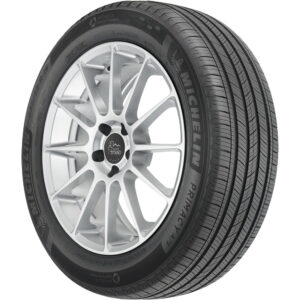When considering an upgrade or replacement for your vehicle’s tires, 225/40r18 tires are a popular choice among drivers because they balance performance and aesthetics.
These tires offer a wider tread footprint, which can improve grip and handling on the road. Their low-profile sidewall enhances the vehicle’s appearance.
The designation “225/40r18” itself indicates the tire’s width, aspect ratio, and diameter, providing a precise fit for vehicles requiring this specific size.
Equipping your car with the right tires is a matter of aesthetics, safety, and compliance.
The 225/40r18 size is commonly found on sporty sedans and coupes, fitting a range of popular makes and models.
It’s important to consider not just the fit, but also the tire type, such as all-season or performance, to ensure appropriate traction and longevity in the conditions you frequently encounter.
When it comes to installation, professional services ensure proper mounting and balance, contributing to your vehicle’s performance and safety.
Key Takeaways
- 225/40r18 tires enhance both vehicle performance and appearance.
- Choosing the correct tire includes considering type, fit, and compliance with safety standards.
- Professional installation and regular maintenance are key to tire performance and safety.
Highest-Rated 225/40R18 Tires
At TireRack.com
At DiscountTire.com
Understanding 225/40R18 Tires
We’ll explore the specifications and performance expectations of 225/40r18 tires, understand their design, and determine their vehicle compatibility.
These tires are a common choice for various sedans and coupes.
Specifications and Features
The size 225/40r18 refers to tire dimensions: 225 mm in sectional width, an aspect ratio (sidewall height) of 40% relative to the width, and designed to fit an 18-inch rim.
Specifications for the 225/40r18 tires typically include:
- Diameter: 25.1 inches
- Section Width: 8.9 inches
- Circumference: 78.8 inches
- Revolutions per Mile: 804
Features can vary but often cover:
- Tread patterns suitable for all-season, summer, or winter driving
- Reinforced sidewalls for durability
- Rubber compounds tailored for specific weather conditions
Tire Design and Construction
225/40r18 tires are engineered with constructive integrity that provides a balance between comfort, durability, and handling. The sidewall’s height, which is 40% of the tire’s width, contributes to the tire’s overall performance and ride quality.
Vehicle Compatibility
Tires of size 225/40r18 are compatible with various models, including but not limited to the 2014-15 Honda Civic Si and the 2013 Toyota Corolla LE.
Confirming compatibility with the vehicle’s make and model is crucial before purchase.
Comparing Similar Tire Sizes
Alternatives to 225/40r18 tires that may also fit certain vehicles include:
- 225/45r18: Slightly taller sidewalls
- 225/50r18: Increased sidewall height, potentially affecting handling
- 225/55r18 to 225/60r18: Progressively taller making them unsuitable for some cars designed for 225/40r18
Performance Variations by Size
Subtle changes in tire size can affect performance.
For example, moving from a 225/40r18 to a 235/40r18 might offer a slight increase in grip due to a wider tread face.
Wider Tire Options
Wider options like 245/40r18 or 255/55r18 increase road contact area, which can enhance grip but might impact fuel efficiency and steering response.
Larger Diameter Tire Options
Larger diameter options, including sizes from 265/60r18 up to 295/70r18, may provide more ground clearance and a bolder look but require careful consideration of wheel well clearance and speedometer calibration.
Maximum Size and Load Options
The maximum tire size and corresponding load capacity need to match the vehicle specifications.
The load capacity is indicated by the load index, for example, a standard 225/40r18 tire might have a Service Description of 92H, where ’92’ indicates the maximum load capacity and ‘H’ is the speed rating.
Selecting the Right 225/40r18 Tires
When choosing the right 225/40r18 tires for your vehicle, consider factors like seasonal performance, size accuracy, tire quality from reputable brands, and, of course, how they’ll affect your vehicle’s performance and value.
All Season vs. Performance Tires
All-Season Tires: These tires are designed to offer reliable performance in a variety of conditions, including wet roads and light winter driving.
The Vercelli Strada II All Season 225/40ZR18 92W XL Passenger Tire and the Cooper Zeon RS3-G1 All Season 225/40R18 92Y XL Passenger Tire are excellent options that provide a good balance between dry and wet traction.
Performance Tires: Built for enhanced grip and handling on dry roads, performance tires like the Lexani LXUHP-207 UHP 225/40ZR18 92W XL Passenger Tire excel in high-speed driving conditions.
However, they may wear faster than all-season tires and might not perform as well in inclement weather.
Shop by Tire Size
- Fullway HP108 225/40R18 ZR 92W XL A/S All-Season Performance Tires: These tires are ideal for many sedans and coupes, offering a blend of all-season and performance capabilities.
- Lionhart LH-503 All-Season 225/40ZR18 92W XL Passenger Tire: Suitable for a range of sub-models, ensuring a precise fit and optimal vehicle performance.
Assessing Tire Quality and Brands
When assessing tire quality, consider the tire’s load index and speed rating.
Tires like the Waterfall Eco Dynamic 225/40R18 92W XL Passenger Tire meet high standards of quality and offer strong performance throughout the year.
Trustworthy brands provide confidence in durability and overall tire life.
Impact of Tire on Vehicle Performance
Tires immensely influence how your car handles, accelerates, and brakes.
Choosing the right 225/40r18 tire can mean improved fuel efficiency, better traction, and a smoother ride.
Each year and sub-model of your vehicle might require specific tire characteristics to optimize performance.
Price Comparison and Value Assessment
To ensure you get the best value, compare prices across different brands and consider the longevity of the tire.
A higher upfront cost might mean better long-term value due to enhanced durability and performance.
Installation and Maintenance
When selecting 225/40R18 tires, it’s crucial to ensure proper installation and maintain regular care to maximize tire life and performance.
Professional Installation
For 225/40R18 tires, we recommend professional installation to ensure they fit your vehicle correctly and are balanced for optimal driving performance. Here’s what you can expect:
- Inspection: Tires are inspected for defects or damage.
- Mounting: New tires are correctly mounted to the rims.
- Balancing: Tires are balanced to prevent vibration.
- Alignment Check: Technicians may advise an alignment check to prevent uneven wear.
Maintenance and Care
To keep your 225/40R18 tires in top condition, follow these maintenance tips:
- Regular Pressure Checks: Maintain tire pressure at manufacturer recommendations to avoid uneven wear.
- Rotation: Rotate your tires every 5,000 to 8,000 miles to distribute wear evenly.
- Balancing: Have tires balanced if you notice vibrations while driving.
- Inspection: Routinely inspect for punctures, cuts, or bulges.
When to Replace Tires
Be aware of these signs that indicate your 225/40R18 tires need replacement:
- Tread Wear: Replace tires when the tread depth reaches 2/32 of an inch.
- Age: Tires older than six years may require replacement due to material degradation.
- Damage: Significant cuts, bulges, or other damage can compromise safety and necessitate replacement.
Safety and Regulatory Compliance
When considering the safety and regulatory compliance of 225/40R18 tires, we focus on a few key aspects that ensure the reliability and security of your driving experience.
It’s important to understand that tire specifications are not arbitrary; they play a vital role in vehicle safety.
Tread Design: Our tires feature advanced tread patterns that evacuate water efficiently. This design reduces the risk of hydroplaning and maintains optimal contact with the road surface.
- Wet Braking: With innovations like MICHELIN EverGrip Technologies, we have managed to enhance braking performance on wet roads, ensuring shorter stopping distances and improved safety.
Durability: We strive to provide long-lasting performance, ensuring that our tires retain their safety characteristics from the first to the last kilometer.
Regulations: Our tires adhere to strict regulatory standards:
- UTQG (Uniform Tire Quality Grading): This standard rates tire treadwear, traction, and temperature resistance. For instance, a 500/A/A rating reflects a balance between longevity (500), traction (A), and temperature resistance (A).
- Load and Speed Index: The load and speed index, such as 92H, indicates the maximum load capacity and top speed the tire can handle safely.
Purchasing Options
When searching for 225/40R18 tires, we have a variety of options at our disposal, each with its own set of advantages.
It’s important to consider online markets, local stores, and potential savings through deals and promotions to secure the best purchase.
Online Shopping
In today’s digital age, buying 225/40R18 tires online is increasingly convenient.
Tire Agent and SimpleTire offer an extensive selection, featuring free shipping and a diverse range of brands.
Online retailers allow us to use filters to sort tires by performance categories, customer reviews, and price, ensuring we find the perfect match for our vehicle’s requirements.
Local Tire Shops
For those who prefer a hands-on approach, local tire shops offer the opportunity to inspect the tires personally before purchasing.
Local retailers may offer services like fitting and wheel alignment, providing us with a comprehensive service.
Remember to call ahead and check their stock for the 225/40R18 size to save time.
Deals and Promotions
We should always be on the lookout for deals and promotions.
These can significantly lower the cost of new tires, whether they are seasonal specials, manufacturer rebates, or payment plans for various credit scores that Tire Agent offers.
Sign up for newsletters or check online listings regularly to stay informed about the best deals available.
User Reviews and Testimonials
When we examine user reviews of 225/40R18 tires, we gather insights from various drivers who rely on these tires for their daily commutes and spirited driving experiences.
Owners of vehicles like the 2014-15 Honda Civic Si and the 2013 Toyota Corolla LE have shared their perspectives.
For the Honda Civic Si, which demands a combination of performance and reliability, users have lauded tires like the Yokohama Advan Sport V107. Here’s what they say:
- Handling: Users report enhanced grip and stability during high-speed maneuvers.
- Durability: Positive feedback on wear rate suggests good longevity.
Toyota Corolla LE drivers looking for comfort and fuel efficiency have different priorities. Reviewers of tires suitable for this make and model often highlight:
- Ride Comfort: Riders appreciate a quieter, smoother ride on various road surfaces.
- Fuel Economy: There are mentions of improved miles per gallon with certain tire brands.
Review excerpts from various sources show consistent themes:
| Source | Ride Quality | Durability | Performance |
|---|---|---|---|
| eBay | Not specified | General satisfaction | Positive trust in product |
| Tire Rack | Real-world testing | Results shared for informed decisions | Bridgestone receives mention |
| 1010tires.com | Emphasis on confidence in purchase | Long collection of reviews since 2000 | – |
| Tyre Reviews & Ratings | Tires like Kumho Ecsta PS71 praised | Rated 77% for a SEAT Leon | Progressive nature noted by drivers |
Environmental Considerations
When discussing 225/40R18 tires, it’s imperative for us to consider their impact on the environment.
Tire wear particles (TWPs) are a concern as they contribute to microplastic pollution.
As tires wear down, particles are released into the ecosystem, posing potential threats to waterways and wildlife.
Chemicals used in tires also come into play. Tires are composed of numerous compounds that can be environmentally harmful.
Particularly, the synthetic rubbers and chemical cocktails used can leach into the environment, causing ecological disturbances.
We should also turn our attention to fuel efficiency.
Tires play a significant role in a vehicle’s fuel economy.
In the case of 225/40R18 tires, which are often found on performance and sports vehicles, rolling resistance can affect fuel consumption.
Low-rolling resistance tires are designed to improve fuel efficiency, thereby leading to reduced carbon emissions.
Here are some key points:
- Tire Wear: Regularly check for even wear to minimize particle release.
- Selection: Choose tires with a lower environmental impact without compromising on safety.
- Maintenance: Proper tire maintenance, including regular pressure checks, can improve lifespan and reduce waste.
For all-season tires in this size, you’ll often find manufacturers offering options with lower rolling resistance.
These all-season tires are designed to provide a balance between performance and ecological impact across varying weather conditions.
Frequently Asked Questions
In this section, we address common inquiries regarding 225/40R18 tires, focusing on their compatibility, performance, and maintenance to ensure you have the essential knowledge to make informed decisions.
What vehicles typically use 225/40R18 tires as a recommended size?
225/40R18 tires are commonly recommended for sports sedans and coupes due to their balance of performance and aesthetics.
Manufacturers such as BMW, Audi, and Honda often fit these tires on their performance models.
How do all-season 225/40R18 tires perform in different weather conditions?
All-season 225/40R18 tires are designed for reliable year-round performance.
They offer sufficient traction in wet and dry conditions and moderate snow capability. However, they may not replace winter tires in severe snow and ice.
Can 225/40R18 tires fit any other vehicles as a suitable alternative size?
Yes, 225/40R18 tires can sometimes be used on vehicles that originally equipped a similar size, such as 225/35R18, as long as the alternative size does not interfere with the vehicle’s handling and speedometer accuracy.
What should be the optimal tire pressure for 225/40 R18 tires?
The tire pressure for 225/40R18 tires typically ranges from 32 to 35 PSI, based on the vehicle manufacturer’s recommendation.
It’s vital to adhere to the specified pressure for optimal grip, fuel efficiency, and tire longevity.
What are the differences between performance and all-terrain 225/40R18 tires?
Performance 225/40R18 tires prioritize handling and speed, featuring softer compounds and tread patterns for better road contact.
All-terrain tires, less common in this size, would have more rugged tread designs for varying terrains.
How do you compare 225/40R18 tires across different manufacturers for quality and longevity?
To compare 225/40R18 tires across manufacturers, examine the Uniform Tire Quality Grading (UTQG) ratings that evaluate treadwear, traction, and temperature resistance.
Also, consider warranties, customer reviews, and performance tests from reputable sources.






